#myrrhbearer
Explore tagged Tumblr posts
Text
SAINTS&READING : Friday, August 4, 2023
august 4_July 22
THE HOLY MYRH-BEARER EQUAL-UNTO-THE-APOSTLES MARY MAGDALENE ( 1st c.)
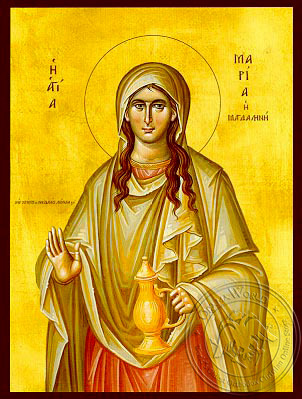
Mary Magdalene was one of the myrrh-bearing women and “equal to the apostles”. She was born in the town of Magdala along the shore of Lake Gennesaret and was from the tribe of Issachar. She was tormented by seven evil spirits from which the Lord Jesus freed her and made her whole. She was a faithful follower and servant of the Lord during His earthly life. Mary Magdalene stood beneath the Cross on Golgotha and grieved bitterly and mourned with the All-Holy Birth-giver of God. After the death of the Lord she visited His sepulchre three times. When the Lord resurrected she saw Him on two occasions: once alone and the other time with the other myrrh-bearing women.
[While it was still dark, Mary Magdalene came to the sepulchre (tomb) carrying the ointments. (For this reason the Church calls her “Myrrh-bearer”.) Coming close she saw that the large stone that had been placed at the entrance of the tomb had been rolled away. She thought that perhaps someone had already come and taken the Body to another place. Hurrying back to Jerusalem she told the apostles Peter and John: “They have taken away the Lord out of the sepulchre, ‘and we know not where they have laid Him.” Together with them she went again to the tomb and stood there weeping. When they had left she stooped down and looked into the sepulchre. There she saw two angels who asked why she was crying. She told them and then, turning around, she saw Jesus, but in her grief she did not recognize Him, and thinking -He was the gardener, e reason for her weeping. It was only then He said her name: “Mary!” that she recognized Him as her beloved Lord. Not believing her own ears, she cried out with joy, [Rabboni] “Master! Then quickly following his His instructions, she ran quickly to announce the good news to the disciples: “Christ is risen!” (Because she was the other time with the other myrrh-bearing women.
She traveled to Rome and appeared before Tiberias Caesar and presenting him with a red colored egg, greeted him with the words: “Christ is Risen!” At the same time, she accused Pilate before Caesar for his unjust condemnation of the Lord Jesus. Caesar accepted her accusation and transferred Pilate from Jerusalem to Gaul where, this unjust judge, in disfavor with the emperor, died of a dread disease. After that, Mary Magdalene returned from Rome [and having passed through all of Italy and France, along with Egypt, Phoenicia, Syria and Pamphylia preaching Christ, she returned to Jerusalem, where she stayed for a period of time with the Theotokos. She returned] to Ephesus to St. John the Theologian whom she assisted in the work of preaching the Gospel. With great love toward the resurrected Lord, and with great zeal, she proclaimed the Holy Gospel to the world as a true apostle of Christ. She died peacefully in Ephesus and, according to tradition, was buried in the same cave in which seven youths were miraculously put to sleep for hundreds of years and, after that, were brought to life and then died (August 4). The relics of St. Mary Magdalene were later transferred to Constantinople. There is a Russian Orthodox convent dedicated to St. Mary Magdalene near the Garden of Gethsemane.
Source: Saint Sophia Orthodox Cathedral , Washington DC
SAINT WANDREGISILUS (Gaul_668)

St.Wandregisel, Church of St. Vincent-de-Paul, Clichy
The son of Walchisus, a kinsman of Pepin of Landen,[2] he was born around 605, near Verdun in the region then known as Austrasia. He was educated at the Frankish court in Metz.
Wandregisel was part of a group of young courtiers including Audoin and Didier of Cahors who served Dagobert I, but in 629 he retired from court to become a monk at Montfaucon under the guidance of Saint Balderic. Wandregisel had received the tonsure without the permission normally required for a courtier, and was summoned to court to explain this apparent oversight. Dagobert then approved his request.[3]
Wandregisel soon withdrew to live as a hermit in complete solitude at Saint-Ursanne in the Jura.[2] Wandregisel adhered to the principles of Columbanus and his disciple Saint Ursicinus, who had founded several monasteries in the region. In 635, Wandregisel spent some time at the monastery of Saint Columban at Bobbio in northern Italy.[1] From there, he wished to travel to Ireland, but by 642 got only as far as the abbey of Romainmôtier,[5] which lay on the banks of the river Isère in the Tarentaise Valley.
Wandregisel was ordained, and then founded Fontenelle Abbey in Normandy,[1] on land obtained from Erchinoald through the influence of his friend Archbishop Audoin of Rouen. Fontenelle followed the rule of Saint Columbanus, and the abbey became an important center of learning. Near the abbey's ruins lies the village of Saint-Wandrille-Rançon.
Wandregisel died on July 22, 668
During the Viking invasions, Wandregisel's relics were dispersed to various locations and shared between various churches, including the abbey of Saint-Pierre-au-Mont-Blandin in Ghent (now in Belgium). Wandregisel's cult was celebrated in England prior to the Norman Conquest of 1066.[1]
In the 19th century one of his relics remained: his skull was found in Liège. It was brought back to the Abbey, when the new church was dedicated in 1967. It can be seen today in a modern reliquary.
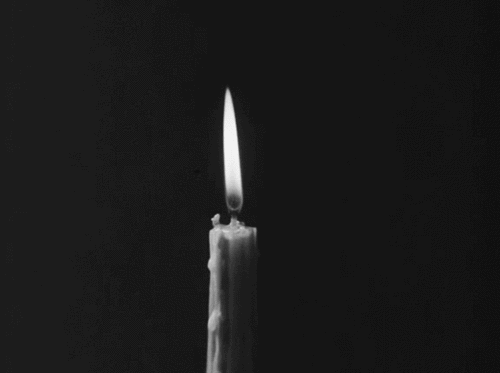

1 CORINTHIANS 9:2-12
2 If I am not an apostle to others, yet doubtless I am to you. For you are the seal of my apostleship in the Lord.3 My defense to those who examine me is this: 4 Do we have no right to eat and drink? 5 Do we have no right to take along a believing wife, as do the other apostles, the brothers of the Lord, and Cephas? 6 Or is it only Barnabas and I who have no right to refrain from working? 7 Who ever goes to war at his own expense? Who plants a vineyard and does not eat of its fruit? Or who tends a flock and does not drink of the milk of the flock? 8 Do I say these things as a mere man? Or does the law not say the same also? 9 For it is written in the law of Moses, "You shall not muzzle an ox while it treads out the grain." Is it oxen God is concerned about? 10 Or does He say it altogether for our sakes? For our sakes, no doubt, this is written, that he who plows should plow in hope, and he who threshes in hope should be partaker of his hope.11If We have sown spiritual things for you, is it a great thing if we reap your material things? 12 If others are partakers of this right over you, are we not even more? Nevertheless, we have not used this right but endure all things lest we hinder the gospel of Christ.
LUKE 8:1-3
1 It came to pass, afterward, that He went through every city and village, preaching and bringing the glad tidings of the kingdom of God. And the twelve were with Him, 2 and certain women who had been healed of evil spirits and infirmities-Mary called Magdalene, out of whom had come seven demons, 3 and Joanna the wife of Chuza, Herod's steward, and Susanna, and many others who provided for Him from their substance.
#orthodoxy#orthodoxchristianity#easternorthodoxchurch#originofchristianity#spirituality#holyscriptures#bible#gospel#saints#apostles#myrrhbearer
5 notes
·
View notes
Text

THE DESCRIPTION OF SAINT JOANNA The Wife of Chuza and the Holy Benefactor of Jesus Christ Feast Day: May 24
Joanna was one of several women in the Bible healed of 'evil spirits and diseases' by Jesus Christ. After being healed, Joanna accompanied Jesus and the twelve disciples on their travels from town to town and helped support the Lord's ministry.
As the wife of Chuza, the manager of Herod Antipas' household estate, Joanna was a woman of means and influence. Along with Mary Magdalene, Susanna, and others, Joanna helped provide food and supplies for the missionary troupe from her own wealth.
Whether Joanna had been set free from a demon or healed of some mental or physical disability, we are not told. But we do know that Joanna remained wholly devoted to Jesus until the end. She traveled with Him on His final journey from Galilee to Jerusalem. She was present at Jesus' crucifixion and burial.
Later, Joanna returned with other women who had prepared spices and burial ointments to anoint Jesus' body. Upon discovering the empty tomb, Joanna and the others ran to report the news to the apostles.
Joanna is mentioned in the Bible only in the Gospel of Luke. The Herod that Joanna's husband was steward for was the tetrarch of Galilee, so Joanna herself must have lived in Tiberias, the capital of Galilee. Scholars believe Joanna may have been a key source of much of the detailed information Luke included in his writings about the life of Jesus. Tradition holds that when John the Baptist was killed during Herod's birthday, she obtained his head and buried it honorably in an earthen vessel on the Mount of Olives, where Herod had a parcel of land.
By welcoming women like Joanna into His inner circle, Jesus broke with Jewish tradition and the strict social divisions of His day. And Joanna, no doubt, stepped down from her aristocratic social position when she chose to follow Jesus and associate with His disciples.
After her conversion, Joanna traveled with Jesus, served Him, learned from Him, and financially supported His ministry. In first-century Judaism, such conduct was considered scandalous for women, and especially a married woman. Joanna's life is an example of how the gospel demolishes class barriers and social prejudices. The fact that she was the wife of a man in Herod's employ is ironic, given the general Herodian hatred for Jesus.
Although little is written about Joanna in the Bible, we can glean from just a few lines that the Lord was precious to her. She had the privilege of being one of the first people to share the good news of Christ's resurrection.
Joanna was a loyal and generous follower of Christ. She proves that the kingdom of heaven is accessible to all who are willing to give their lives in humble service to Jesus and others.
#random stuff#catholic#catholic saints#saint joanna#joanna wife of chuza#sta. juana#juana de cusa#myrrhbearer
0 notes
Text

3 notes
·
View notes
Text
Έρραναν τον τάφον αι Μυροφόροι μύρα, λίαν πρωί ελθούσαι
The myrrh-bearing women came early in the morning and sprinkled the tomb with myrrh

The Myrrhbearers stand vigil at the tomb of Christ at Holy Friday Lamentations
13 notes
·
View notes
Text
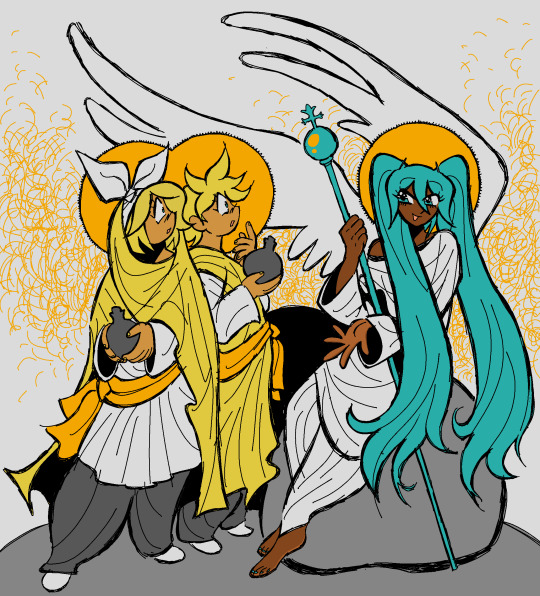
[Image description: A digital drawing of Kagamine Rin and Len as myrrhbearers and Hatsune Miku as an angel. Rin and Len are dressed in yellow and white robes with orange sashes and loose gray pants. They each carry a gray bottle and look with deep shock at Miku, who is dressed in white robes and carries a teal staff topped with a globus cruciger. She sits on a boulder and gestures invitingly towards the empty tomb before them. All three characters have orange haloes, and there are clouds of orange scribbles drawn across the white background. End image description.]
happy birthday @apostlewithapomegranate <3
130 notes
·
View notes
Text

You descended into the tomb, O Immortal, You destroyed the power of death. In victory You arose, O Christ God, proclaiming: “Rejoice!” to the Myrrhbearing Women, granting peace to Your Apostles, and bestowing Resurrection on the fallen.
14 notes
·
View notes
Text
Those who have ears, let them hear

I was drawn to take a moment to share a little about my understanding of Mary Magadlene so far, and how she ended up so central to my current direction. I fully expect it to change and be adjusted in the future.
Now, to preface, my practice is a specific tone of perennialistic, in which the idea that the forces that are true have always been, shall ever be, and will always express themselves in a way that will catch the attention of the desired audience; the seed of truth has no choice but to grow on. In that the stories we tell each other have a great chance to reveal what lives within the core of our comprehension and interaction with the divine. In that, these stories are not necessarily historic, and one must learn proper discernment to differentiate between provable fact an personal spiritual impression. They do not even be non-fictional per se. We are in communion with Spirit, and that is the best She can make us understand.
The following is linked, quite obviously, to Biblical and apocryphal texts, but the goal here specifically to lay out my present vision. Citations is a subject for another day. The following is pure feelings with no receipts.
I associate Magralene with what is understood as the Daughter in Filianism - Her role is elect, and priestly, and divine. She is the conduit for full divine power, and a mighty protector of women who are spiritually gifted, and whose soul fire is ready to soar up.
As a Myrrhbearer, she is the Priestess, the conductor of ritual, the one celebrating the divine within material. She is the root and the soul of faith and power.
She is the avatar of a woman fully embodied in her spirituality and her material plenty.
She is the one teaching us to trust in good when another would nitpick for evidence - and that trust is rewarded.
To add an item completely off the rails (for my former self, anyway, who would never allow such conjecture), |I do feel there exists an embodied flow of Marian initiatory energy, of holy femininity, and I am currently at peace suggesting that Mary is many-in one, distinct yet belonging to a singular current of love, expressed in different forms.
#mary magdalene#magdalene#mother mary#filianism#deanism#if I find out thhis has textual confirmation I swear
13 notes
·
View notes
Text

Italian School, 19th Century (Unsigned)
Mary Magdalene as Myrrhbearer, n/d, oil on canvas, 31 1/2x24 1/2 in
Private Collection
8 notes
·
View notes
Text
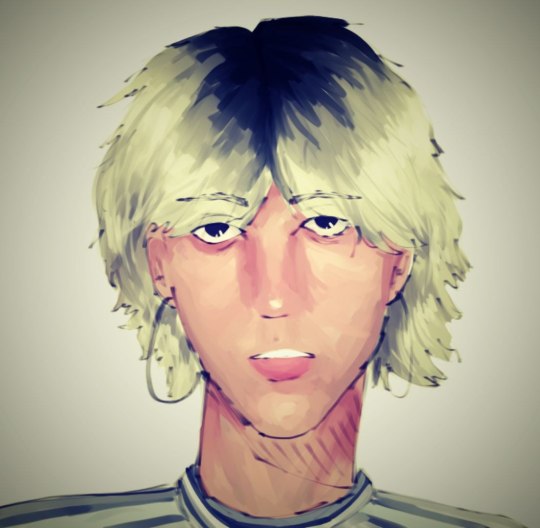
The next words he let out were 'pelargonium', 'goat's stable', 'Savoy cabbage' and 'Jacques Fearful' (the nickname of the assistant gardener at the nearby convent of the Women of Myrrhbearers, Madame Gaillard sometimes hired him for the hardest work, and he was notable for not washing himself once in his life)
(Das Parfum — Die Geschichte eines Mörders)
#artists on tumblr#the garden band#vada vada#vadavada#thegarden#art#digital art#cool art#рисование#drawing#fletcher shears#the garden#wyatt shears#the garden twins
9 notes
·
View notes
Photo

Saint Mary of Magdalene, Myrrhbearer and Equal to the Apostles, Announces The Resurrection icon
24 notes
·
View notes
Text
frustrated with the state of evangelicalism and youth ministry and random men who they let preach after attending a youth revival thingy tonight (the things i do for love) but jesus and i had a nice time of our own nonetheless. i love being named after a myrrhbearer. i meditated on preparing his body for burial and then when i cried to my parents after being triggered by the charismatic prayer stuff my stepdad led me through another beautiful meditation on giving jesus my burdens. i love when he comes out to meet me in a more physical way. it makes me so overwhelmed with love. i can’t wait to touch him for real some day.
#screams into the void#christianity#i didn’t know he was going to meet me in this forest i was imagining but he came out from behind a tree and carried my fear and#i kissed him on the head like i had done earlier with his body. my dear beloved#also got to hold abby’s hand :) still haven’t said anything to her because i’m terrified but i WILL
21 notes
·
View notes
Text
Saints&Reading: Friday, August 16, 2024
august 3_august 16
VENERABLER ISAAC, DALMATIUS AND FAUSTUS ASCETICS OF THE DALMATIEN MONASTERY, CONSTANTINOPLE (5 th.c.)

Saint Isaac (May 30) was a soldier before he became a monk. After he was tonsured, he attained such a degree of spiritual perfection that he was accounted worthy of beholding divine visions.
When Saint Isaac heard about how the Emperor Valens had fallen into the Arian heresy and was persecuting the Orthodox Christians, he left his monastery and traveled to Constantinople to confront the emperor. At that time Valens was planning a campaign against the Goths. Saint Isaac tried to change the emperor’s mind several times, but was unable to convince him. He prophesied that Valens would die in flames because of his actions. The emperor ordered that Saint Isaac be thrown into prison, and promised to deal with him when he returned from his expedition. On August 9, 378 Valens was defeated at Adrianople and died in a fire after hiding in a barn, just as the saint had predicted.
Emperor Theodosius the Great, who had a great love for the saint, released him from prison and banned Arianism. Saint Isaac attended the Second Ecumenical Council (381), where he defended the Orthodox Faith against the Arian heresy.
Saint Isaac hoped to return to his monastic life in the wilderness, but a wealthy man built a monastery for him at Constantinople, and he became its first igumen. The monastery was later named for his disciple Dalmatus.
His son Faustus supported his father in everything and, after a godly life, died peacefully in that community.
HOLY MYRRH-BEARER SALOME

Saint Salome (Salómē) was the first cousin of the Virgin Mary, the mother of our Lord Jesus Christ. She was the wife of Zebedee and the mother of James (April 30) and John (September 26). She was one of the women who followed Christ and ministered to Him from their own means, even until His Crucifixion and Burial. On the third day they went to the tomb to anoint His body, they did not lose their faith in Him, nor did they fear the Jewish rulers.
It was Salome who asked the Lord to let her two sons sit, one at His right hand, and one at His left (Matthew 20:20-21), for she thought that Jesus was about to restore the throne of David at Jerusalem. During the Lord's Passion, when His disciples and friends hid themselves from fear, Salome and the other faithful women remained by the Cross, beating their breasts in sorrow (Matthew 27:55-56; Mark 15:40; Mark 16:1-8).
Salome was also one of the Myrrhbearering women to whom the Angel revealed Christ's Resurrection. After the Descent of the Holy Spirit on the day of Pentecost, Salómē continued to distinguish herself by her zeal and her almsgiving.
The persecution of the Jerusalem Church caused Salome great sorrow. Her final heartbreak was when Herod beheaded her eldest son James (Acts 12:2). But Christ strengthened her, and in the hope of resurrection to everlasting life, she surrendered her soul in peace.
Source: All texts Orthodox Church in America_OCA


1 CORINTHIANS 11:8-22
8 For man is not from woman, but woman from man. 9 Nor was man created for the woman, but woman for the man. 10 For this reason the woman ought to have a symbol of authority on her head, because of the angels. 11 Nevertheless, neither is man independent of woman, nor woman independent of man, in the Lord. 12 For as woman came from man, even so man also comes through woman; but all things are from God. 13 Judge among yourselves. Is it proper for a woman to pray to God with her head uncovered? 14 Does not even nature itself teach you that if a man has long hair, it is a dishonor to him? 15 But if a woman has long hair, it is a glory to her; for her hair is given to her for a covering. 16 But if anyone seems to be contentious, we have no such custom, nor do the churches of God. 17 Now in giving these instructions I do not praise you, since you come together not for the better but for the worse. 18 For first of all, when you come together as a church, I hear that there are divisions among you, and in part I believe it. 19 For there must also be factions among you, that those who are approved may be recognized among you. 20 Therefore when you come together in one place, it is not to eat the Lord's Supper. 21 For in eating, each one takes his own supper ahead of others; and one is hungry and another is drunk. 22 What! Do you not have houses to eat and drink in? Or do you despise the church of God and shame those who have nothing? What shall I say to you? Shall I praise you in this? I do not praise you.
MATTHEW 17:10-18
10 And His disciples asked Him, saying, "Why then do the scribes say that Elijah must come first?" 11 Jesus answered and said to them, "Indeed, Elijah is coming first and will restore all things. 12 But I say to you that Elijah has come already, and they did not know him but did to him whatever they wished. Likewise the Son of Man is also about to suffer at their hands. 13 Then the disciples understood that He spoke to them of John the Baptist. 14 And when they had come to the multitude, a man came to Him, kneeling down to Him and saying, 15 Lord, have mercy on my son, for he is an epileptic and suffers severely; for he often falls into the fire and often into the water. 16 So I brought him to Your disciples, but they could not cure him. 17 Then Jesus answered and said, "O faithless and perverse generation, how long shall I be with you? How long shall I bear with you? Bring him here to Me." 18 And Jesus rebuked the demon, and it came out of him; and the child was cured from that very hour.
#orthodoxy#orthodoxchristianity#easternorthodoxchurch#originofchristianity#spirituality#holyscriptures#gospel#bible#wisdom#faith#saints
4 notes
·
View notes
Text

The White Angel, detail from the Myrrhbearers fresco in Mileseva Monastery, Serbia.
"The term traditionally refers to the women who came with myrrh to the tomb of Christ... In Western Christianity, the women at the tomb, the Three Marys or other variants are the terms normally used." Myrrhbearers
5 notes
·
View notes
Text
SALOME // SAINT
“She was a follower of Jesus who appears briefly in the canonical gospels and in apocryphal writings. She is named by Mark as present at the crucifixion and as one of the Myrrhbearers, the women who found Jesus's empty tomb. Interpretation has further identified her with other women who are mentioned but not named in the canonical gospels. In particular, she is often identified as the wife of Zebedee, the mother of James and John, two of the Twelve apostles. In medieval tradition Salome (as Mary Salome) was counted as one of the Three Marys who were daughters of Saint Anne, so making her the sister or half-sister of Mary, mother of Jesus.”


1 note
·
View note
Text
On this day in Wikipedia: Wednesday, 24th April
Welcome, ongi etorri, laipni lūdzam, vítejte 🤗 What does @Wikipedia say about 24th April through the years 🏛️📜🗓️?

24th April 2022 🗓️ : Death - Andrew Woolfolk Andrew Woolfolk, American saxophonist (b. 1950) "Andrew Paul Woolfolk II (October 11, 1950 – April 24, 2022) was an American saxophonist. Woolfolk was a longtime member of the band Earth, Wind & Fire from 1973 to 1985, and from 1987 to 1993. He also collaborated with artists such as Deniece Williams, Stanley Turrentine, Phil Collins, Twennynine,..."

Image licensed under CC BY-SA 2.0? by Chris Hakkens
24th April 2017 🗓️ : Death - Robert M. Pirsig Robert Pirsig, American author and philosopher (b. 1928) "Robert Maynard Pirsig (; September 6, 1928 – April 24, 2017) was an American writer and philosopher. He is the author of the philosophical novels Zen and the Art of Motorcycle Maintenance: An Inquiry into Values (1974) and Lila: An Inquiry into Morals (1991), and he co-authored On Quality: An..."

Image licensed under CC BY 2.5? by Ian Glendinning, en:User:IanGlendinning
24th April 2014 🗓️ : Death - Sandy Jardine Sandy Jardine, Scottish footballer and manager (b. 1948) "William "Sandy" Pullar Jardine (31 December 1948 – 24 April 2014) was a Scottish professional footballer who played for Rangers, Hearts and represented Scotland. He played over 1000 professional games and twice won the Scottish Football Writers Association Player of the Year award. He won several..."
24th April 1974 🗓️ : Birth - Eric Kripke Eric Kripke, American director, producer, and screenwriter "Eric Kripke (born 1974) is an American writer and television producer. He came to prominence as the creator of the fantasy drama series Supernatural (2005–2020) which aired on The CW. He served as the showrunner during the first five seasons of the series. Since then he has created and/or produced a..."

Image licensed under CC BY 2.0? by
vagueonthehow (original)
Supernino (derivative work)
24th April 1924 🗓️ : Event - Thorvald Stauning Thorvald Stauning becomes premier of Denmark (first term). "Thorvald August Marinus Stauning (Danish: [ˈtsʰɒːˌvælˀ ˈstɑwne̝ŋ]; 26 October 1873 in Copenhagen – 3 May 1942) was the first social democratic Prime Minister of Denmark. He served as Prime Minister from 1924 to 1926 and again from 1929 until his death in 1942. Under Stauning's leadership, Denmark,..."

Image by Francis Zachariae (1852–1936)
24th April 1823 🗓️ : Birth - Sebastián Lerdo de Tejada Sebastián Lerdo de Tejada, Mexican politician, President of Mexico (d. 1889) "Sebastián Lerdo de Tejada y Corral (Spanish pronunciation: [seβasˈtjan ˈleɾðo ðe teˈxaða]; 24 April 1823 – 21 April 1889) was a Mexican liberal politician and jurist who served as the 27th president of Mexico from 1872 to 1876. A successor to Benito Juárez, who died in office in July 1872, Lerdo de..."
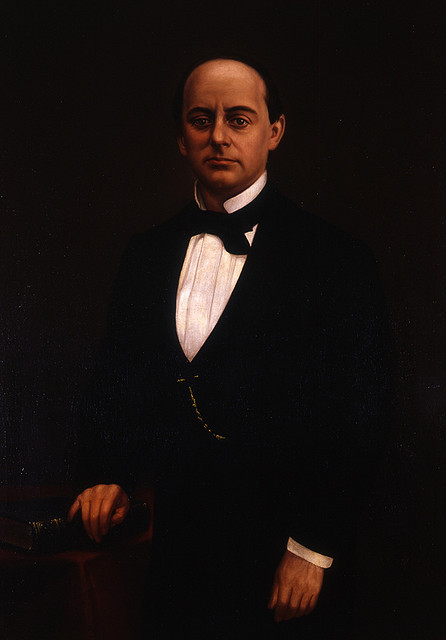
Image by Francisco de Paula Mendoza
24th April 🗓️ : Holiday - Christian feast day: Salome (disciple) "In the New Testament, Salome was a follower of Jesus who appears briefly in the canonical gospels and in apocryphal writings. She is named by Mark as present at the crucifixion and as one of the Myrrhbearers, the women who found Jesus's empty tomb. Interpretation has further identified her with..."
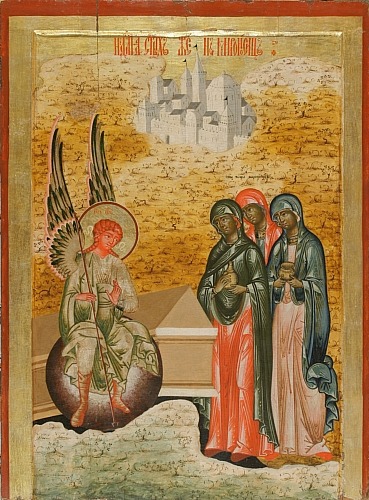
Image by anonimous
0 notes
Text

The myrrhbearing icon of Our Lady of Iviron from Hawaii was brought to the Romanian Orthodox Monastery of Mono, Canada, on February 24, 2024. Photo credit: Holy Cross Orthodox Monastery
26 notes
·
View notes